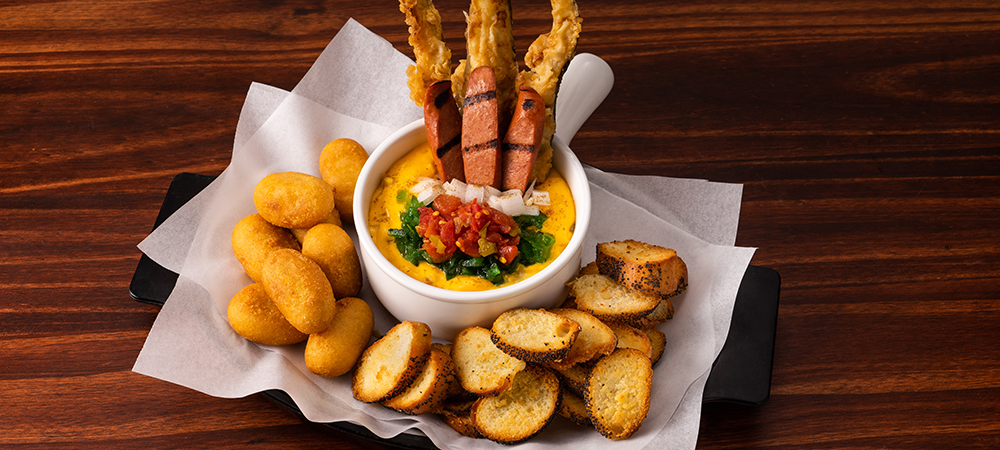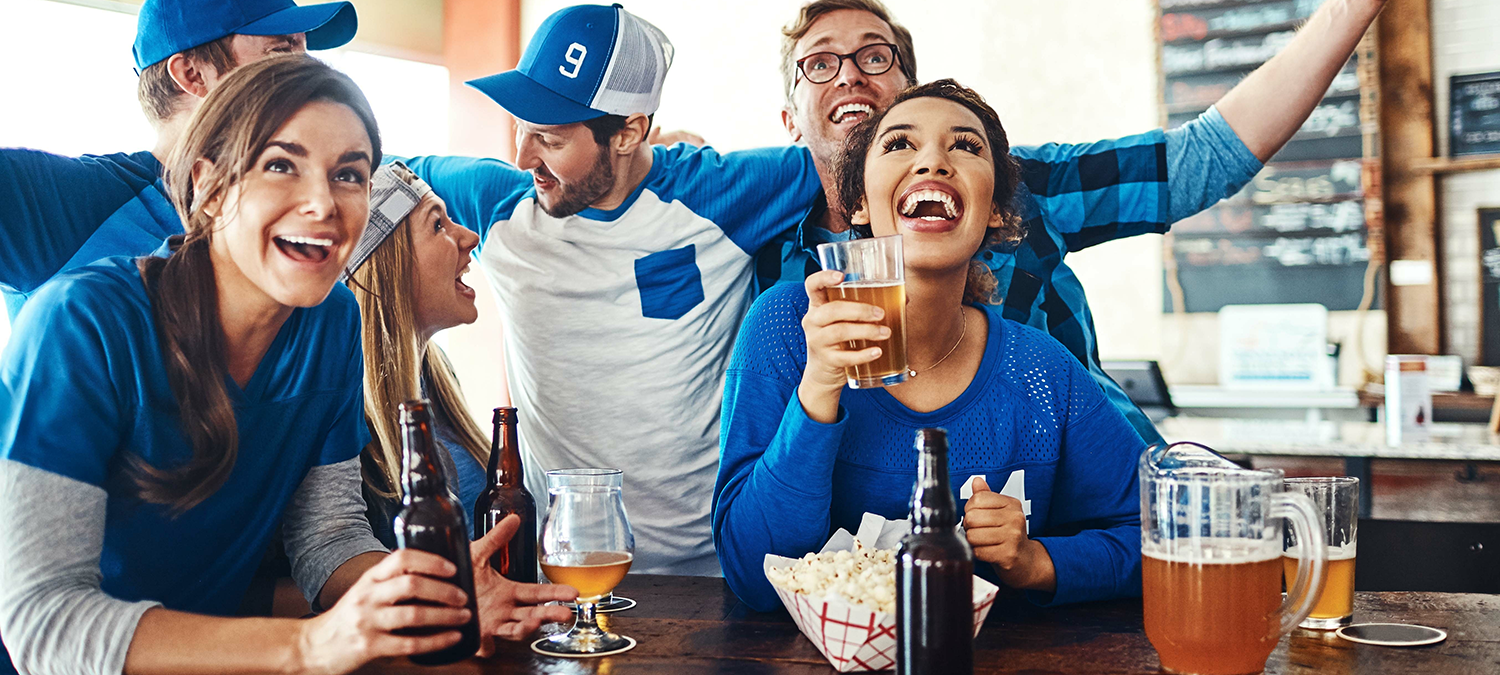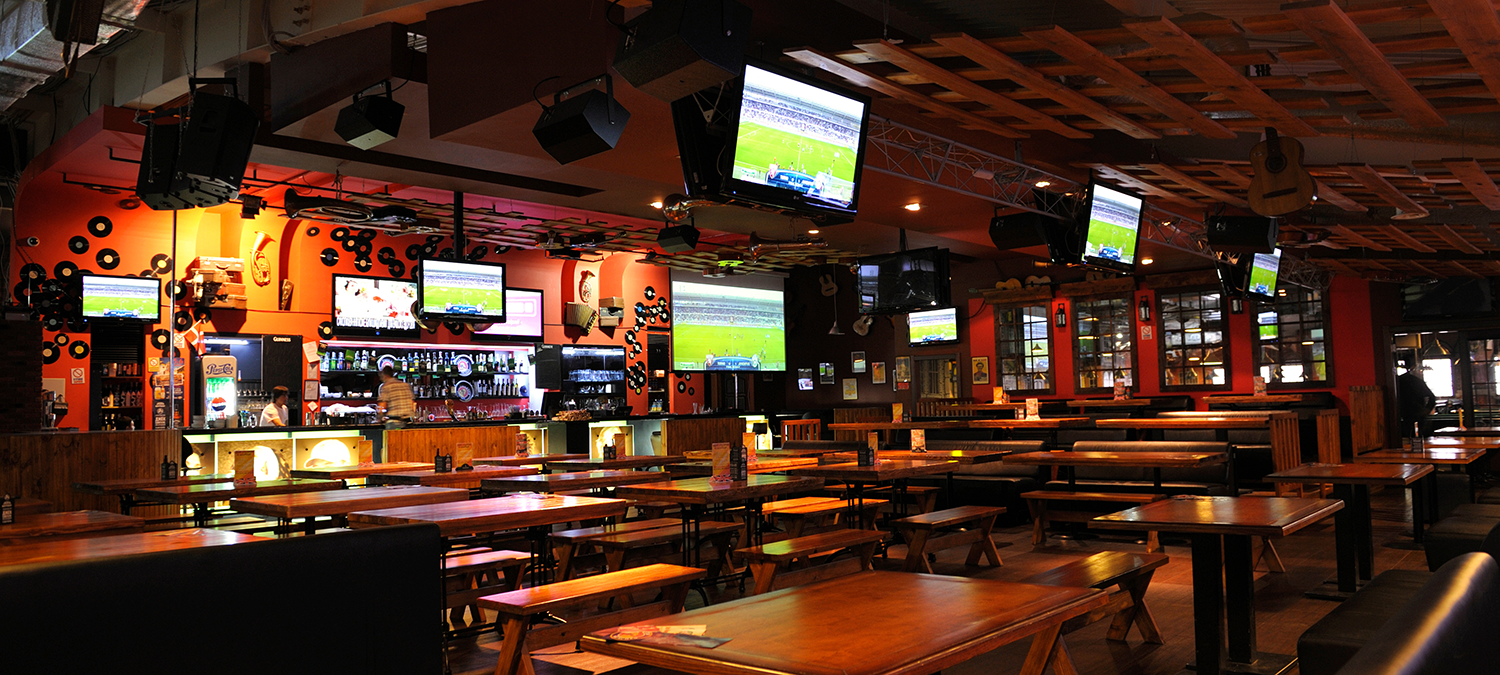Sponsored by Conagra RO*TEL
Composing and perfecting your gameday menu should begin long before the season does. When considering all aspects of the menu — from ordering to execution — balance should be at the front of your brain.
 Just like your full menu, you never want your special offerings to come off as one-note or repetitive. Varying proteins, textures, temperatures, flavors, cooking methods, and price points ensures that every guest can find something to entice them.
Just like your full menu, you never want your special offerings to come off as one-note or repetitive. Varying proteins, textures, temperatures, flavors, cooking methods, and price points ensures that every guest can find something to entice them.
This same attention to parity on the line will keep any one station from getting bogged down during the gameday rush. Your kitchen cannot operate at maximum efficiency if your grill cook has a half-full rail while your sauté station has printer tickets about to hit the floor.
Spreading the load is vital. Ideally, your grill and sauté cooks should be the strongest members of your brigade, but they need to be carefully managed.
What Should Go on the Gameday Menu?

Obviously, you’ll want to build your gameday menu around your top selling items with manageable pickup times. Your grill cook should be churning out hamburgers like Steph Curry draining threes. If they can’t do it in their sleep, you need a better grill cook. Also be sure to include fun shareable menu items like quesos, wings, nachos, etc.
It’s perfectly acceptable to keep steak on the menu, as your guests will definitely still have larger cravings. You would be wise, however, to shy away from thicker cuts like porterhouses as they eat precious time. Instead opt for flat-iron or hanger steaks that can be finished in a fraction of the time. Any items that can be par-cooked and safely held will be valuable assets as well; think roasted half chickens and smoked ribs.
If you have the luxury of a sauté station as well as a cook dedicated solely to hot appetizers, you have the liberty to run a more expansive menu. If, on the other hand, the same person that makes your nachos and chicken wings is the same person delivering pastas and veggies to the pass, you’ll have to make some tough decisions.
Hot apps, along with garde manger, can be the most important station in your kitchen. When there’s a bottleneck at the very first course, the snowball effect is a death sentence for your service. In cases of limited staffing, it’s always better to err on the side of caution. A three-page menu does you no good if you can’t execute it.
In general, you’ll want to look at items you can quickly get out of the kitchen (without sacrificing quality) in balance with the type of foods your guests love.
Don’t Forget Gameday Drinks

The kitchen is not the end-all be-all of your operations, though. In a massive game rush, your bartenders are the backbone of the establishment. When beer and cocktails are flowing, the wait time for food doesn’t seem quite as long. There are a few major ways you can assist your crew on the sticks with the menu alone.
When it comes to beer, yes, draft is more profitable, but compared to popping off a bottle cap, it is a time drain. You should try to focus on bottle sales for your peak times. Draft sales are inevitable, and obviously welcome, but incentivizing pitcher sales can alleviate some of the backup that comes with them.
Your gameday cocktail menu is not the place to get cute or show off your trendiness. Keep your drinks simple, minimizing ingredients wherever possible. Batchable drinks like sangria, particularly in the summer, will keep your bar staff moving and out of the weeds.
Testing Your Sports Bars Gameday Menu

Once you feel you have reached the proper balance for both guests and staff, it is just as crucial that you test out your new menu in order to find any potential weaknesses or complications.
Your first guinea pigs are the people already in the building every day: management, servers, and bar staff. Trying out dishes with your own people before they hit the menu not only gives you valuable input, but also involves them in the process, making them more invested and knowledgeable.
Once you clear that hurdle, it’s time to try the menu on your guests. Dishes that came directly from your main menu aren’t your concern here, (remember, you asked your regulars for input when you first conceived the menu) but anything making its debut should be first run as a special.
You can’t get away with it on a Monday or Tuesday lunch, this needs to be a feet to the fire, Friday night dinner rush experiment. Remember, you’re not just looking for guest reactions, but also how the items affect your kitchen flow.
It may take a bit of trial and error, and there may be some comped meals along the way. But just like the sports teams your guest are there to cheer for, you will owe a great deal of your success to the preparation you put in before gameday.











Leave A Comment
You must be logged in to post a comment.